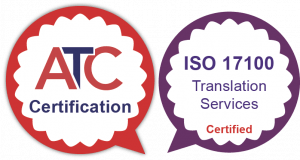In today’s ever-connected global market, many certification organizations are looking to expand their programs to a new audience by delivering exams internationally. But before an organization dives into the global market, there are several key considerations and decisions that must be made to ensure that delivering a global program is the right thing to do and will contribute to organizational growth. Read on for some tips and best practices if your organization is thinking about international expansion!
Analyze the Market
The first consideration when making the decision to go international is to ask yourself, why grow? There may be several drivers to this decision such as financial impact, certificant reach, or market demand. Determine what your organizational and programmatic goals are, and set a strategy based on those goals and related metrics. When to expand should also be a consideration. For example, an existing program that is well established in the domestic market may be primed for global expansion whereas a brand-new program may want to launch domestically first and ensure it sees several years of steady growth (a common benchmark is 3-5 years) before moving to new markets.
One of the most critical investments to make when considering program expansion is conducting market research to strategically determine if and where to expand. It is not enough to simply decide you want to deliver exams in a new country if you don’t have data to support the market there. Be sure to budget for market research, conduct a gap analysis, and listen to your stakeholders. If there is a current need in a particular region it will be natural to move in that direction. However, if you anticipate future demand and you want to be in that market, you will need to do more work to make a business case. Expanding internationally requires a financial investment, so it’s best to do it only if it makes sense for your business needs and goals.
Your test development and/or delivery partner can be a valuable resource as they manage many programs and can likely provide insights about international markets. You might even find that they do not support delivery in international markets or specific areas where you are looking to grow, and you’ll need to have a plan to address that potential gap. You’ll also need to determine the best way to offer your exam in a new market. For example, are you taking a U.S.-based credential and administering it in other countries, or are you developing a different exam that is customized to a local market? If it’s the latter, your organization will have to be very careful to design the certification (via practice analyses or JTA) so it’s customized to local practices.
Scan the Landscape
When you’ve identified the countries or regions in which you want to deliver and conducted your market research and feasibility studies, you’ll also want to scan the landscape, taking into consideration the political, economic, social, technological, environmental and legal factors that could impact your business. For example, ask yourself questions such as:
- Is the political environment supportive?
- Are there existing country-specific regulations for the profession itself?
- What are some legal business issues – e.g. tax laws, data privacy concerns – that can have an operational impact?
- What are the economic realities of pricing exams in local currency vs. foreign currency?
- If exams are computer-based, does the target country have the technology and infrastructure to support delivery? If not, do you have the flexibility to offer paper-and- pencil tests?
Operating your business in new countries is a more complex undertaking as you’ll be dealing with new business models, laws, regulations, customs, and cultures, so it is important that you understand the environment before launching your program.
Protect Your Brand
Exam security and protecting your organization’s IP should be top of mind when thinking about international growth. Security is a continuous process that evolves with your program, so consider the prevention, detection and enforcement model. With global delivery you’ll have to manage cultural influences, emerging markets, and security challenges; plan to mitigate threats on all fronts; and protect your exam and brand integrity. Remember that high testing volume and/or high demand for the certification increases the likelihood of cheating and drives the market for brain dump sites and stolen content that’s sold on gray market websites. Legal remedies can be harder to come by when operating globally – for example, it can be very difficult to enforce U.S. copyright laws abroad. Develop a plan and strategy for protecting your most valuable asset – your content. Exam integrity and brand protection is the ultimate goal. Setting up multiple security measures to protect content is critical in maintaining the integrity of your exams and your certification brand.
Exam Translation
If your goals involve offering any exams in a different language than is currently offered, another key step in the process that is key to the validity, reliability, and fairness of your exams is translation. Translation can have a big impact on the psychometric validity of your exams. You’ll want to be sure to engage with a company that follows industry standards and perform continuous monitoring of your translated exams to ensure fairness to all candidates regardless of the language in which they test. Translation also involves additional costs, which is another reason to fully understand the market need before making the financial commitment to translate any or all exams.
Evaluating Your Success
Once you’ve launched a global or international program, metrics will be key to evaluating your success. As you move into new markets, be prepared to constantly evaluate your strategy and make course corrections as needed. When something doesn’t go as planned or you aren’t meeting key performance indicators, dig into your data, analyze the root cause, and make an adjustment to get back on target. As with any big initiative, growing internationally will require constant evaluation and adjustment, but if you ask yourself the right questions, evaluate your organization’s goals, study the market and make solid strategic decisions, it can set you up for success. Good luck!




